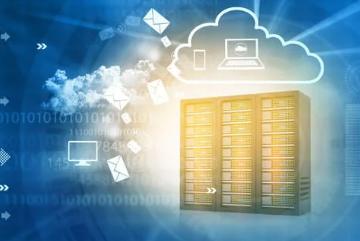
Blog
Building Observability into Your Applications: A Developer’s Guide CoDriveIT

In today’s cloud-native, distributed world, traditional monitoring isn't enough. To truly understand what’s happening inside your applications — especially complex, microservices-based systems — you need observability.
Observability helps teams detect, diagnose, and resolve issues faster by giving deep visibility into system behavior. In this guide, the experts at CoDriveIT break down the essentials of building observability into modern applications — and how it can dramatically improve reliability, performance, and user experience.
What is Observability?
Observability is the ability to measure the internal state of a system based on its outputs. Unlike simple monitoring (which tells you when something is wrong), observability helps answer:
Why is it wrong?
Where did it originate?
How can we prevent it?
The Three Pillars of Observability:
Logs – Detailed, timestamped records of events.
Metrics – Numerical data about system performance (CPU, memory, latency).
Traces – Request flows across services (useful in microservices).
Why Observability Matters
🔍 Faster Incident Response
Find and fix production issues before they impact users.
⚙️ Better DevOps & CI/CD
Understand release performance, debug pipelines, and catch regressions early.
📈 Optimize Performance
Detect bottlenecks, slow queries, or memory leaks before they escalate.
💬 Improve Customer Experience
Correlate user feedback with backend behavior to fine-tune UX.
How to Build Observability into Your Applications
✅ 1. Structured Logging
Implement structured logs (JSON, key-value pairs) to enable better parsing and querying.
Use tools like:
Logstash
Fluentd
AWS CloudWatch Logs
💡 Pro Tip: Add context to logs — request IDs, user IDs, environment labels.
✅ 2. Metrics Collection
Expose custom metrics with libraries like:
Prometheus client libraries
Micrometer (for Java/Spring)
StatsD
Track KPIs like:
API response time
Database latency
Queue lengths
✅ 3. Distributed Tracing
Implement tracing to visualize full request journeys across services.
Use tools like:
OpenTelemetry
Jaeger
Zipkin
AWS X-Ray
Trace context propagation is key — use tracing headers across services.
✅ 4. Instrumentation by Design
Embed observability into your codebase from day one. Instrument:
API endpoints
Database queries
Background jobs
Third-party services
Frameworks like Spring Boot, Express.js, and Django have built-in hooks for observability.
✅ 5. Centralized Dashboards
Aggregate your logs, metrics, and traces using platforms like:
Grafana
Elastic Stack (ELK)
Datadog
New Relic
Splunk
This allows teams to visualize the system health in real-time.
Observability in Cloud-Native & Microservices Architectures
In distributed environments, observability becomes essential. Without it, debugging is like finding a needle in a haystack.
CoDriveIT helps businesses:
Instrument microservices
Correlate cross-service failures
Set up service-level objectives (SLOs)
Integrate observability in CI/CD pipelines
Success Story: How CoDriveIT Reduced MTTR by 70%
A logistics company suffered frequent outages in their containerized microservices stack. CoDriveIT:
Integrated OpenTelemetry across services
Set up real-time tracing and alerts
Built centralized Grafana dashboards
Result: 70% faster incident resolution and 99.99% uptime in 6 months.
Conclusion
Observability is no longer optional — it’s a critical foundation for modern application reliability. By building observability into your apps from the start, you enable better performance, faster debugging, and higher user satisfaction.
Start Your Observability Journey with CoDriveIT
Want to make your systems more transparent and reliable?
Let CoDriveIT help you design and implement a complete observability solution tailored to your tech stack.
📞 Contact us today for a free observability consultation
visit our website www.codriveit.com





